Kirk Douglas: The late Hollywood icon's most memorable roles
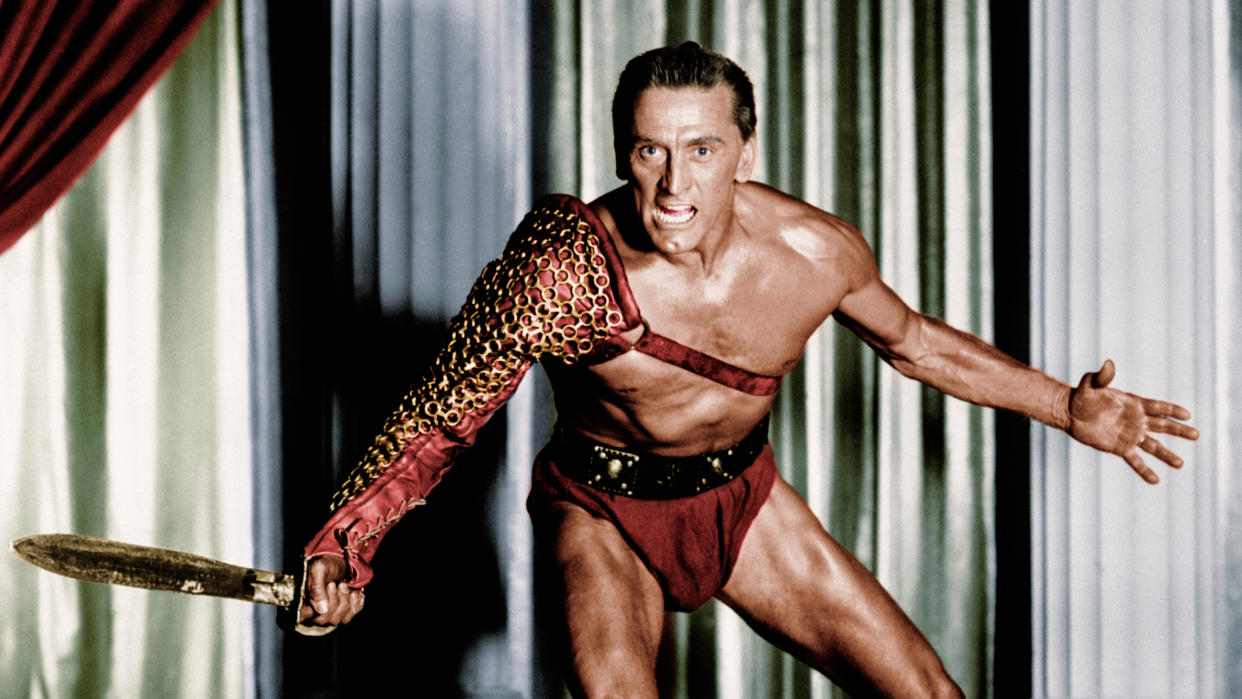
Kirk Douglas — one of the last living icons of the Golden Age of Hollywood — has passed away at the age of 103, with the movie industry quickly rushing to pay tribute to one of its most significant and legendary figures.
His career spanned almost 60 years, from 1946 film noir The Strange Love of Martha Ivers through to his final big screen credit in 2004 as an elderly movie director in indie feature Illusion. Ill health following a stroke in 1996 prevented him from appearing in many films during his later years, but he remained a celebrity blogger as well as undertaking philanthropic work.
Read more: Douglas poses for picture with four generations of his family
Douglas was nominated for three Oscars during his career and was given an Honorary Award by the Academy in 1996. He was also given the Cecil B. DeMille Award for lifetime achievement at the Golden Globes all the way back in 1968.
In the wake of the star’s sad death, it’s worth taking a look back at some of the roles that cemented him as one of the most significant movie stars ever to grace the silver screen.
Champion (1949)
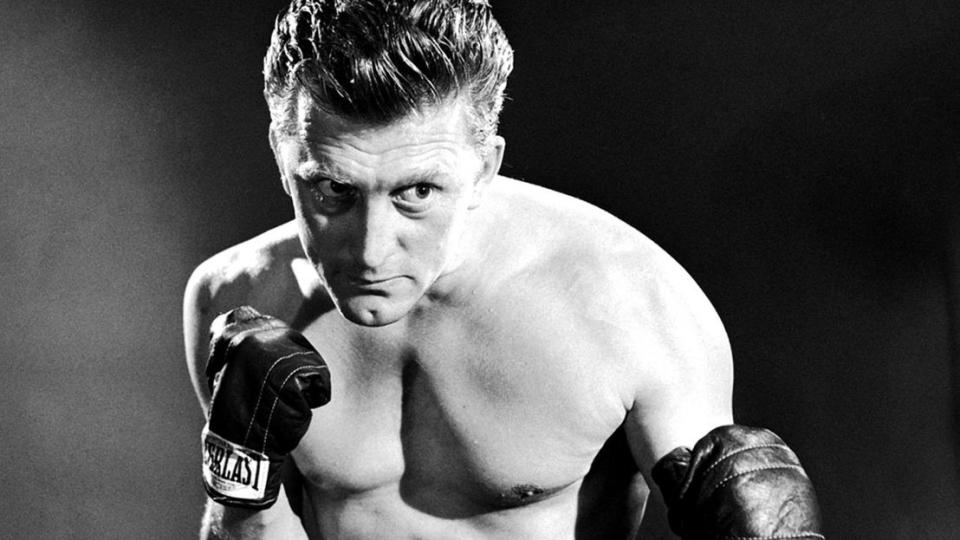
Three years after his movie debut, Douglas made a big impact as the lead in boxing drama Champion. He played boxer Midge Kelly, who is a morally questionable fighter willing to do anything inside or outside the ring to achieve his goals. It was a complex and difficult role which earned the star his first Oscar nomination for Best Actor. The film was nominated six times at that year’s Academy Awards in total, winning the prize for Best Editing.
Ace in the Hole (1951)
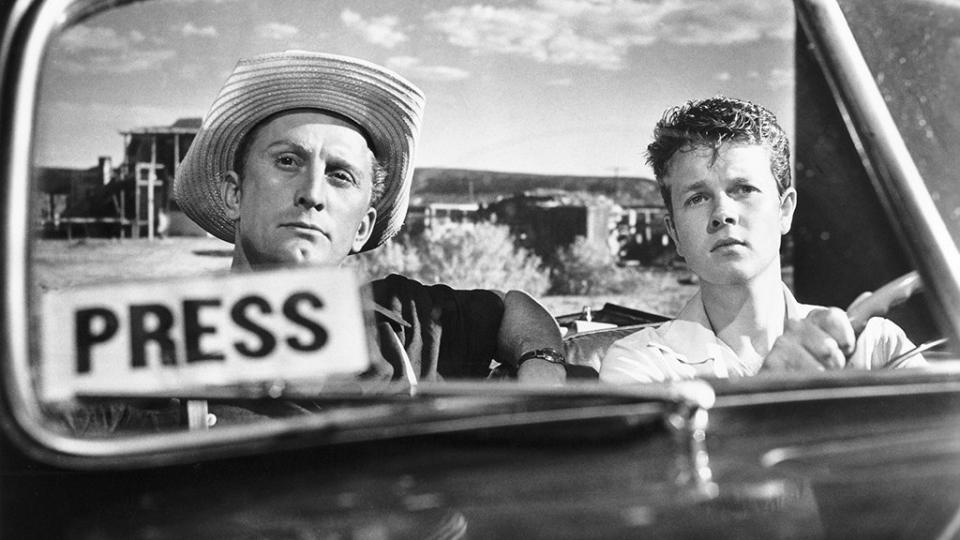
Billy Wilder is best known for comedy classics like Some Like It Hot and The Apartment, but he was also an iconic director of film noirs, including Sunset Boulevard and Double Indemnity. His 1951 noir Ace in the Hole was a rare commercial failure for Wilder, but it has since been reappraised as another of the director’s classics. Douglas played a disgraced reporter who manipulated and exploited the story of a man trapped in a cave to restore his own reputation. It was the inspiration for Radio Bart — one of the best episodes of The Simpsons — and that’s the measure of a truly classic film.
Read more: The Wilder film drastically changed after a test screening
Detective Story (1951)
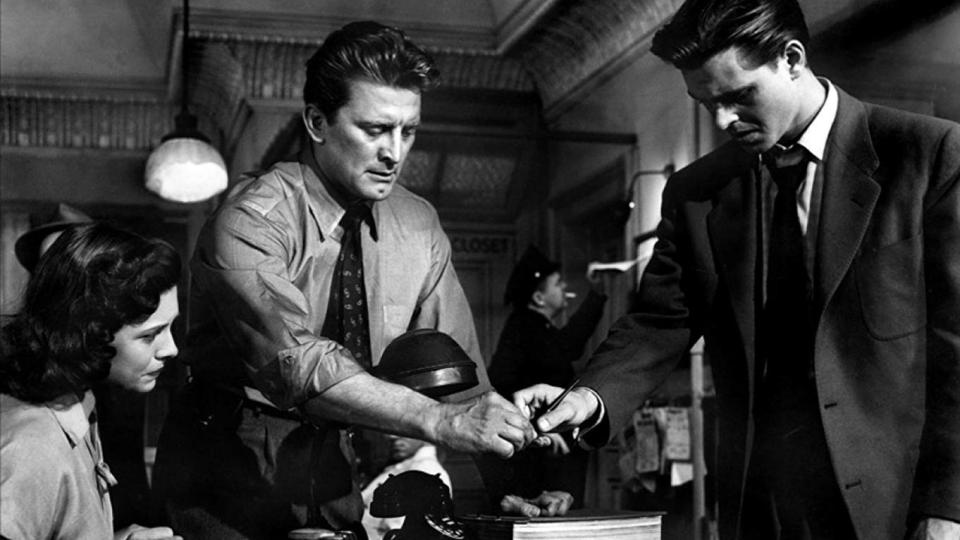
William Wyler’s sprawling tale of New York City cops spanned a day in the life of a police precinct, with Douglas at the height of his stardom playing Detective Jim McLeod. His performance was described at the time as “forceful and aggressive”, with the movie running into troubles with the Motion Picture Production Code, which governed the content of Hollywood movies at the time. References to one character being an illegal abortionist were made more implicit and an exception had to be obtained to allow the killing of police officers to be depicted. The movie was subsequently nominated for four Oscars.
The Bad and the Beautiful (1952)
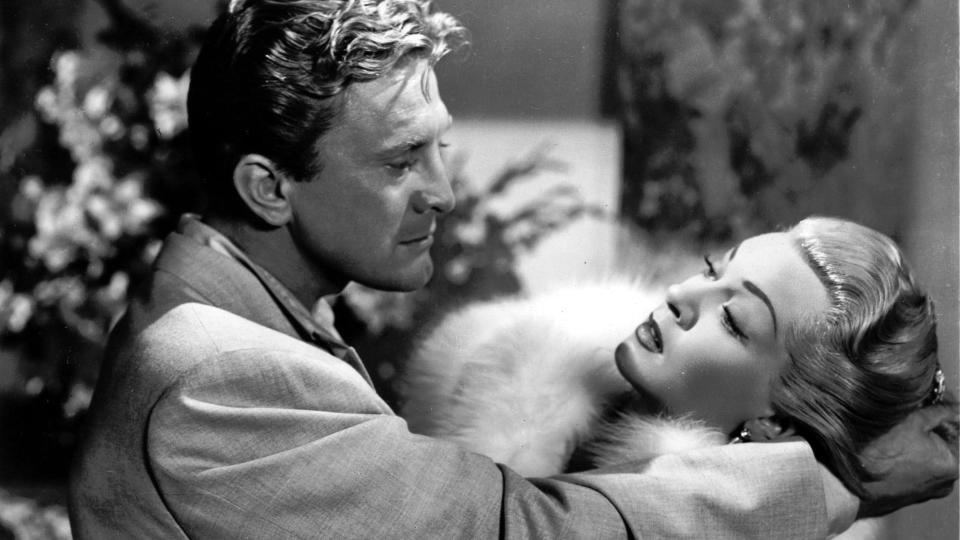
Douglas scored his second Best Actor nomination for appearing alongside fellow Golden Age icons Lana Turner and Gloria Grahame. In fact, his was the only one of the movie’s six nods that did not result in a win. Grahame’s win for Best Supporting Actress was, at the time, the shortest performance to ever win an acting Oscar — with just over nine minutes of screen time. Douglas portrayed an unpleasant movie producer, who was inspired by several real-life Hollywood figures including horror specialist Val Lewton and Gone with the Wind producer David O. Selznick.
Lust For Life (1956)

Douglas’ third and final nomination for a competitive Oscar came for his performance as painter Vincent Van Gogh, directed by musicals specialist Vincente Minnelli. He won a Golden Globe Award for the performance in the movie, which was a fairly straight retelling of Van Gogh’s life. Portraying the artist has been a reliable awards nomination winner ever since, with Willem Dafoe Oscar-nommed for At Eternity’s Gate and the compelling artistic experiment Loving Vincent nominated for Best Animated Feature the year before.
Read more: Willem Dafoe defends Van Gogh role against age backlash
Gunfight at the O.K. Corral (1957)
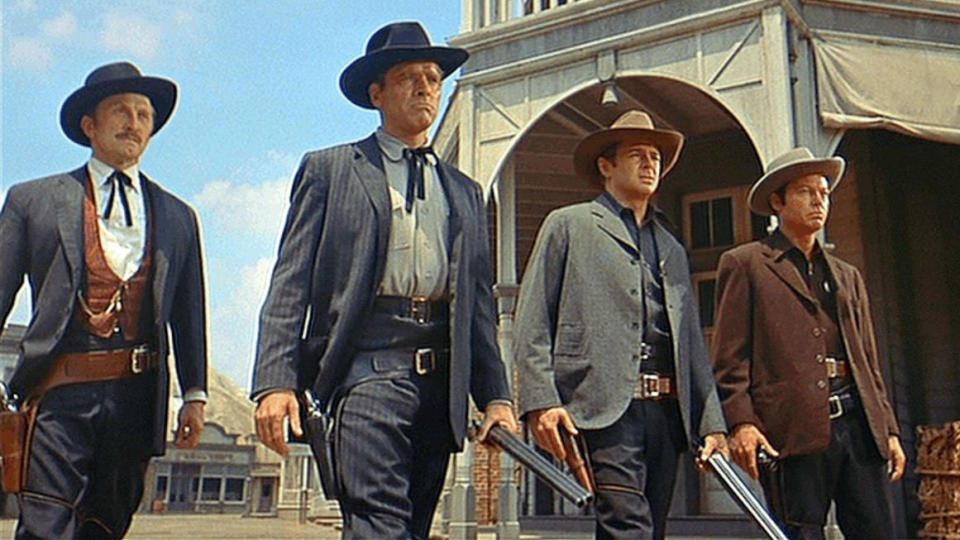
Douglas’ big screen partnerships with fellow major star Burt Lancaster were among the most successful of his career. Perhaps the most famous is the Western Gunfight at the O.K. Corral, which was loosely based on the real event from 1881. Lancaster played legendary lawman Wyatt Earp, with Douglas portraying his associate Doc Holliday. The movie was well-reviewed and a hit at the box office, as well as giving the shootout the name it is now most commonly known by — cribbed from a contemporary news report — despite the fact the real event happened several doors down the street from the O.K. Corral.
Read more: The first ever Western film was shot in Lancashire
Paths of Glory (1957)
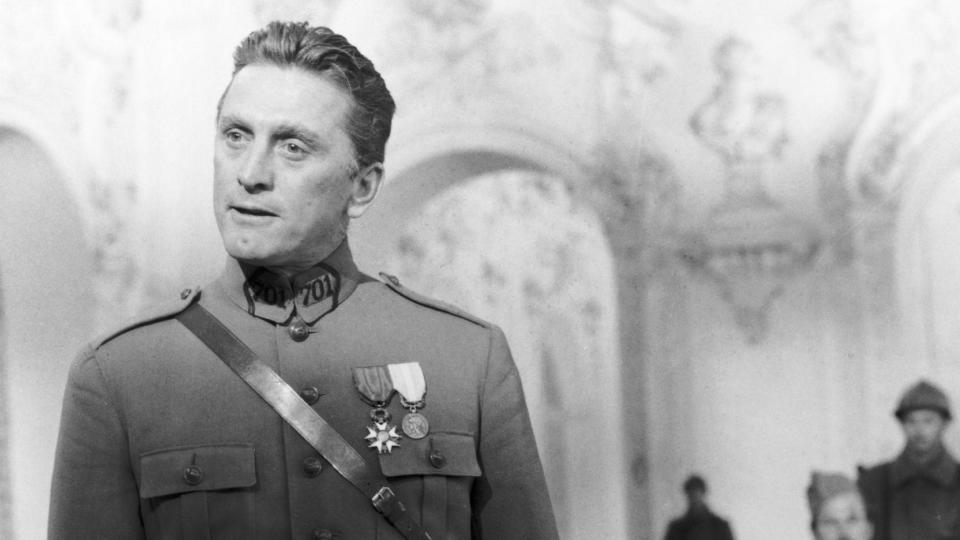
After his first major Hollywood picture The Killing stumbled, Stanley Kubrick turned to Douglas as a potential backer for a First World War script he had written. The star was interested and secured a million dollars from United Artists for Kubrick to make the movie — with Douglas as the lead and a third of the budget allocated to his hefty salary. The resulting film is a stark, anti-war movie that really helped to establish Kubrick as the icon of cinema he would become. Douglas, of course, would work with Kubrick again very soon afterwards.
Spartacus (1960)
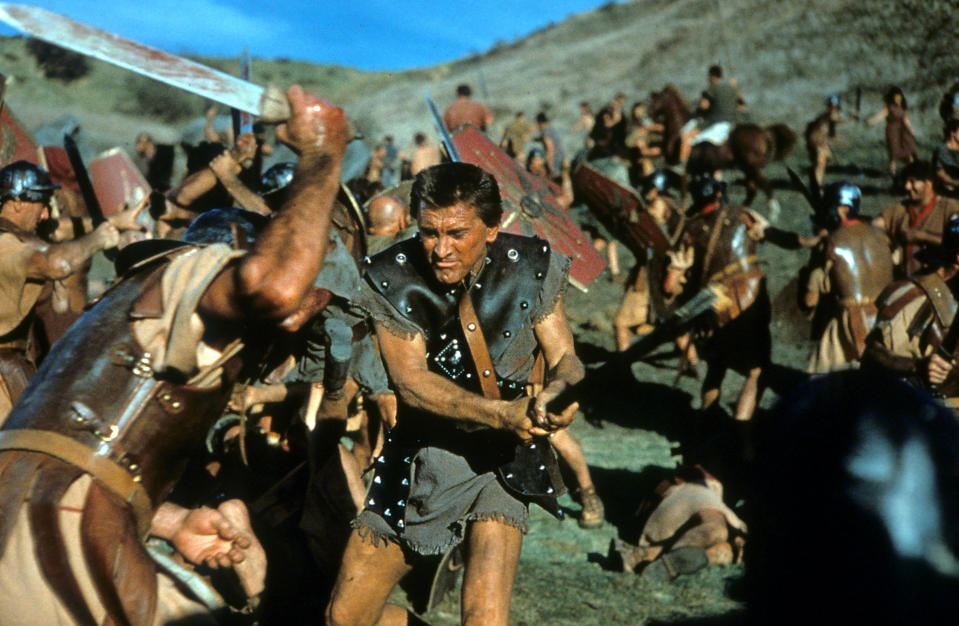
In the role that would arguably come to define Douglas’ career, he played the title role in this three-hour historical epic, inspired by the story of the titular gladiator and leader of a slave revolt. Douglas, wielding his power as executive producer, removed original director Anthony Mann after just one week of shooting and replaced him with Kubrick, whom he had worked with on Paths of Glory.
Read more: Why does Stephen King hate Kubrick’s The Shining?
The movie won four Oscars, embedded itself in popular culture with the “I’m Spartacus” scene and established Kubrick as a man capable of helming major Hollywood spectacle. Spartacus is also significant for its contribution to the end of the Hollywood Blacklist — ensuring suspected Communist sympathisers could not work in movies — as Douglas publicly revealed blacklisted Dalton Trumbo to be the screenwriter of the movie.
Lonely Are the Brave (1962)
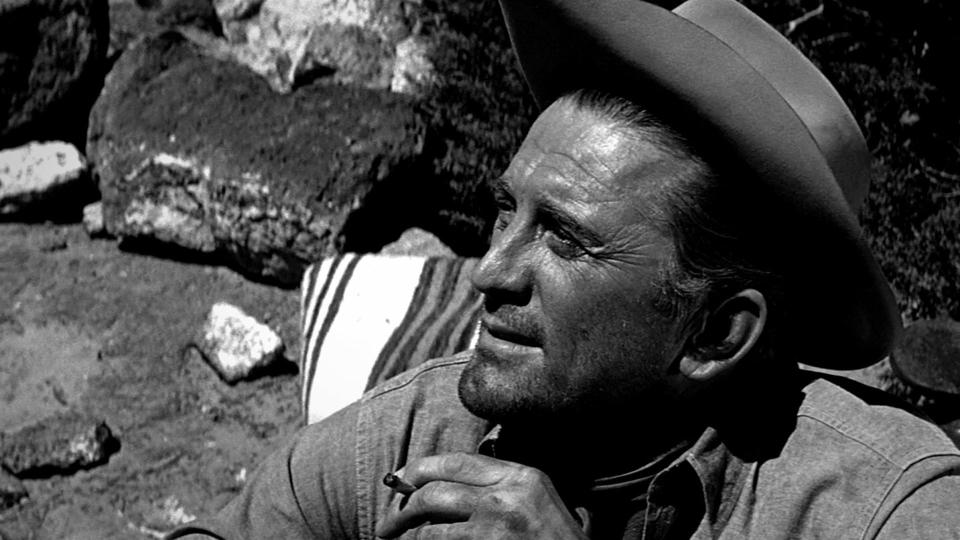
Douglas lobbied Universal Pictures to produce this Western after reading Edward Abbey’s novel, assembling a cast and crew largely of his choosing, including the aforementioned writer Dalton Trumbo. Douglas played a cowboy on the run from the law and has described the film as his own personal favourite from his filmography. John F. Kennedy was also a fan, screening the movie in the White House, according to the memoir of Washington Post editor Ben Bradlee.
Tough Guys (1986)
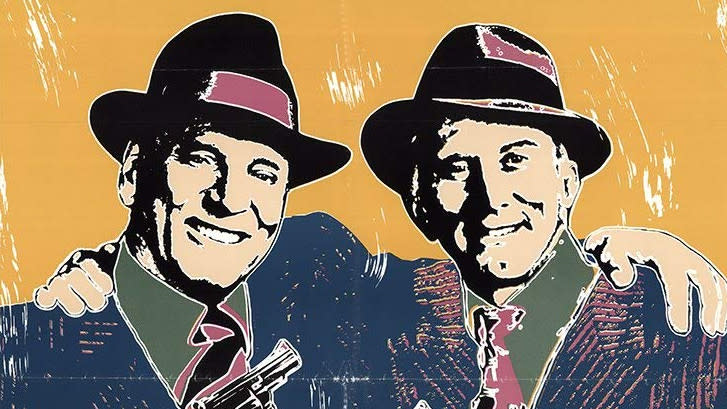
Notable for being Douglas’ final appearance alongside regular collaborator Lancaster, Tough Guys put the two Hollywood stalwarts together as gangsters out on parole after serving 30 years for hijacking a train. The movie received mixed reviews but, as a swansong for one of cinema’s great pairings, it still has real nostalgic value. Lancaster retired from acting just four years later after suffering a stroke, and he passed away in 1994 at the age of 80.
Diamonds (1999)
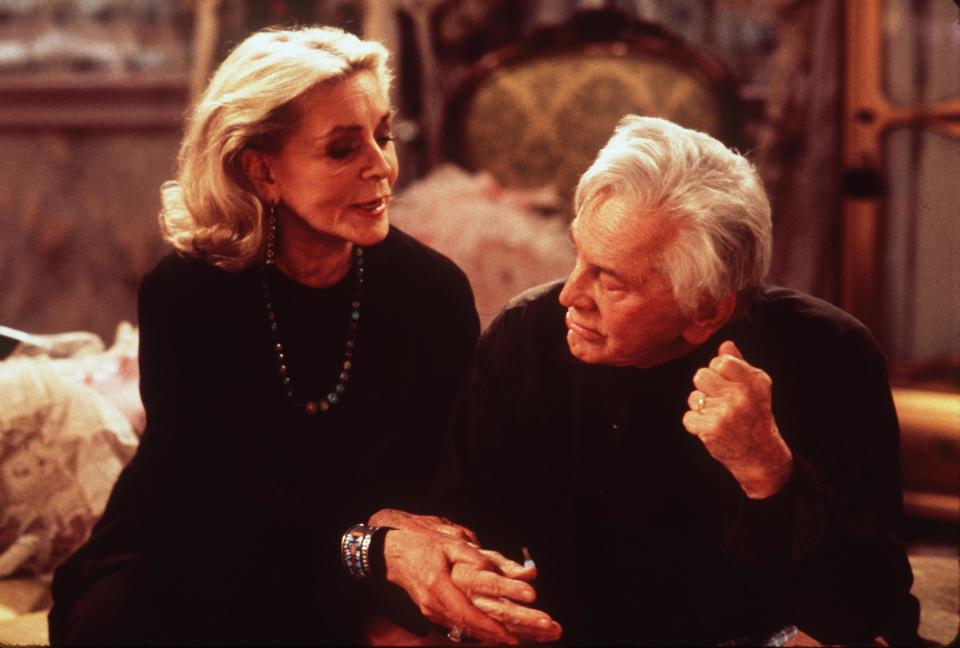
Three years after a stroke almost ended his acting career, Douglas made a big return with Diamonds. He portrayed a former boxer — with clips from Champion used to illustrate his in-ring prime — struggling to mend bridges with his estranged son, played by Dan Aykroyd. Douglas’ fellow Golden Age icon Lauren Bacall also appeared in the movie, which was her first role alongside Douglas since they starred together in 1950 musical Young Man with a Horn.

 Yahoo Movies
Yahoo Movies 
